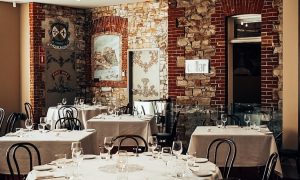 Presented by the Adelaide Youth Orchestras
Presented by the Adelaide Youth Orchestras
Reviewed Sunday 15th May 2011
http://adyo.com.au/concert/grandparents-concert
Venue: Concordia College Chapel, 45 Cheltenham Street, Highgate
Season: One performance only
Duration: 2hrs incl interval
This thoroughly enjoyable afternoon concert featured two orchestras: the Adelaide Youth Strings, open to children between the ages of 8 and 12, and the Adelaide Youth Sinfonia, that includes small woodwind and brass sections, which is open to young people between the ages of 13 and 18. The Strings were conducted by Martin Butler and the Sinfonia by Philip Paine.
Although the title suggests one thing, the reality was entirely another, with an audience of all ages, from tiny tots to very senior citizens and all ages in between. This concert offered something for absolutely everybody and the huge crowd clearly indicated their appreciation with their enthusiastic applause after every item and demands for encores from both orchestras.
The Adelaide Youth Strings played for the first half with a selection of pieces that began with an Angolan folk tune O Desayo. O desayo is a traditional sung greeting which may be interpreted as ‘good day to you’. Its syncopated rhythms and lyrical melody made it an intriguing start to the concert.
For their second piece they turned to a work written specifically as a teaching exercise, its three sections introducing students to two of the ecclesiastical modes, Lydian and Phrygian, before ending in D major; Daniel Chisham’s Final Quest. This piece had only recently been added to their repertoire and this gave it a very creditable performance.
Richard Meyer’s compositions had a good representation starting with the energetic, Cellos Olé, a Spanish inspired piece featuring, as the title implies, the cello section. His Fiddler’s Stew was a medley of 28 American folk melodies that had the audience listening attentively to see how many they could pick. The fun filled piece, Rosin Eating Zombies from Outer Space, was the third and final of his pieces, complete with screams from an enthusiastic orchestra. These three selections all had a light hearted feel to them and the orchestra injected plenty of life into them.
Next was a traditional Welsh lullaby, Suo Gân, by an anonymous composer. The title literally means ‘lull song’ or ‘sleep song’ or, simply, ‘lullaby’. This was beautifully played with an appropriate gentleness.
Their final piece, Postcards from Russia, is a medley of Russian tunes, mainly folk tunes including Minka, Meadowland and Korobushka, arranged by Carrie Lane Gruselle. It is a fast piece with some technical challenges that the strings handled very well. Demands for an encore brought forth a repeat of Final Quest.
The second half was played by the Adelaide Youth Sinfonia, beginning with two very familiar pieces. I wish I had a dollar for every time that I have played Reinhold Glière’s Russian Sailor’s Dance from his ballet, The Red Poppy, and the English Folk Song Suite by Ralph Vaughan Williams, in a concert band setting. The former piece is the best known dance from the ballet and, perhaps, the best known of all of Glière’s music. It certainly seemed to appeal to both the orchestra and the audience, and proved a wise choice to open their part of the concert. The folk song suite is probably one of the best known of the concert band works of Vaughan Williams, arranged here for orchestra, with its three contrasting movement structure, the movements titled Seventeen Come Sunday, My Bonny Boy and Folk Songs from Somerset. This, too, had immediate audience appeal.
Then the strings had a work out on the Pizzicato Polka, Op. 234 of 1870 by Johann Strauss II, not to be confused with his New Pizzicato Polka, Op. 449 of 1892. The polka was a very popular dance right through Europe and the Sinfonia brought out the lively and infectious rhythms with style.
A very popular choice for the next item was Canadian composer, Howard Shore’s theme from the film, The Lord of the Rings. Although he has written the scores for over forty films, this is the one that really made his name. His film music has won him numerous awards. He will also, incidentally, be composing the music for the forthcoming film of The Hobbit. It was clear that the Sinfonia connected with this piece and gave it their all.
The final piece on their programme was the Hungarian Dance No. 6 by Johannes Brahms, always a very popular inclusion in a programme. Again, the musicians entered into the mood of the music bringing out the feeling of the folk dances of Hungary. They, too, were called on for an encore and gave a repeat of the Russian Sailor’s Dance, to enormous applause.
This was a wonderful way to spend a couple of hours on a Sunday afternoon, particularly with tea, coffee and home made cakes available at the interval to add to the enjoyment. The selections for the programme were all guaranteed to appeal and there was some very good playing by these young musicians.
The next concert by the Adelaide Youth Orchestras is the Maestro Series 2 concert at 6:30pm, Sunday 5th June, Elder Hall. Don’t miss it.
Reviewed by Barry Lenny, Arts Editor, Glam Adelaide



















